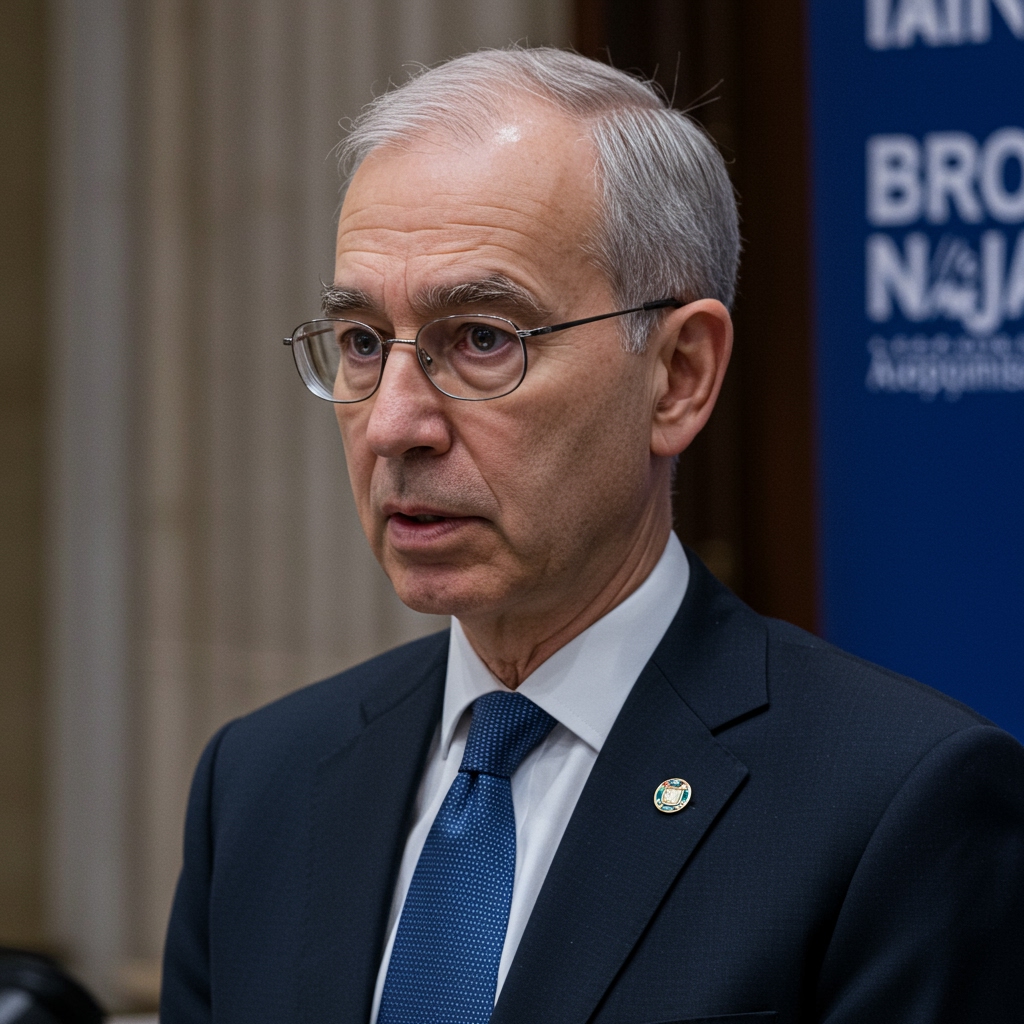International Coalition Launches Ambitious Global AI Safety Standards Initiative
In a significant development marking a concerted international effort to govern the burgeoning field of artificial intelligence, the newly formed International AI Governance Council (IAGC) today unveiled a comprehensive and groundbreaking proposal for mandatory global AI safety standards. Comprising representatives from an influential group of 18 nations, including the leading G7 bloc and several pivotal emerging economies, the IAGC presented its detailed framework on February 15, 2025. The initiative represents perhaps the most ambitious attempt yet to establish unified, legally enforceable safety protocols for advanced AI systems across national borders.
The proposal outlines a series of stringent requirements aimed at mitigating the potential risks associated with increasingly powerful AI models, ranging from unforeseen emergent behaviors to deliberate misuse. Central to the IAGC’s plan are demands for enhanced transparency, rigorous independent evaluation, and accountability mechanisms designed to foster trust and ensure responsible AI development and deployment worldwide.
Proposed Technical Standards: Audits and Computational Thresholds
A cornerstone of the IAGC’s initiative is the call for independent third-party audits for specific categories of AI models. The proposal targets models surpassing a significant computational power threshold of 10^25 FLOPs (floating-point operations per second). This threshold is identified as a key indicator for models potentially possessing advanced capabilities or exhibiting complex, non-linear behaviors that warrant particularly close scrutiny. The IAGC posits that independent auditing is crucial to verify the safety, security, and ethical compliance of these high-impact systems before and during their deployment.
These audits would go beyond simple functionality tests, delving into aspects such as potential biases, robustness against adversarial attacks, alignment with human values, and the adequacy of internal safeguards. The requirement for third-party independence is designed to ensure impartiality and build public confidence in the assessment process, preventing developers from solely self-certifying the safety of their most powerful AI creations.
Establishing a Global Incident Reporting Database
Recognizing the necessity for real-time monitoring and learning from AI system failures or unexpected behaviors, the IAGC proposal mandates the establishment of a global ‘AI Incident Reporting Database’. This centralized repository is envisioned as a critical tool for tracking adverse events, security breaches, ethical violations, and other significant incidents involving AI systems across the globe. The database would collect anonymized data on incidents, enabling researchers, policymakers, and developers to identify trends, understand common failure modes, and develop more effective safety measures proactively.
The IAGC has set an ambitious timeline for the creation and operationalization of this database, targeting its establishment by Q3 2025. The database is expected to facilitate international collaboration on AI safety research and provide valuable insights for updating standards and regulations as the technology evolves. Its success will likely depend on robust reporting mechanisms and a commitment from member nations and AI developers to contribute data promptly and accurately.
Combating Misinformation with Authenticity Markers
In response to the growing global threat posed by deepfakes and sophisticated AI-driven misinformation campaigns, the IAGC proposal includes provisions for legally binding requirements for clear AI-generated content labeling. These mandated labels, referred to within the proposal as ‘Authenticity Markers‘, are intended to provide users with clear indicators when content – including text, images, audio, and video – has been created or significantly altered by AI.
The proposal emphasizes that these markers must be resistant to tampering and easily verifiable by the public and automated systems. The goal is to empower individuals to distinguish between authentic human-created content and synthetic media, thereby helping to combat the proliferation of deceptive content and protect democratic processes, public discourse, and individual reputations worldwide. Implementing and enforcing these legally binding requirements across different platforms and jurisdictions presents significant technical and regulatory challenges, which the IAGC acknowledges will require ongoing international cooperation.
The International AI Governance Council: A Coalition of Influence
The formation and composition of the International AI Governance Council underscore the growing global consensus on the need for coordinated AI regulation. The inclusion of the G7 bloc alongside several influential emerging economies in the 18-nation coalition provides the IAGC with significant political and economic weight, suggesting a broad base of support for unified global standards. This diverse representation is crucial for developing frameworks that are equitable, effective, and applicable in various technological and socio-economic contexts.
The IAGC’s structure and mandate reflect a recognition that AI’s challenges and opportunities transcend national borders, necessitating a harmonized international approach rather than a patchwork of disparate national regulations. By bringing together major developed and developing nations, the Council aims to foster a shared understanding of AI risks and work collaboratively towards common solutions that promote innovation while safeguarding global society.
Implications and the Path Forward
The proposal for mandatory global AI safety standards, independent audits, a universal incident database, and legally binding authenticity markers represents a pivotal moment in AI governance. If adopted and effectively implemented, these standards could significantly influence the trajectory of AI development, pushing the industry towards greater responsibility and transparency.
However, the path from proposal to enforceable international law is complex. The IAGC’s recommendations will need to be discussed, debated, and potentially adapted through diplomatic negotiations and legislative processes within each member nation and potentially within international bodies. Challenges include agreeing on specific technical requirements, ensuring compliance across diverse regulatory landscapes, and balancing safety imperatives with the need to foster innovation.
The IAGC’s initiative, announced on February 15, 2025, sets a clear agenda for global action on AI safety. It signals a collective determination from a significant portion of the international community to proactively address the potential risks of advanced AI through binding standards and collaborative oversight mechanisms.





